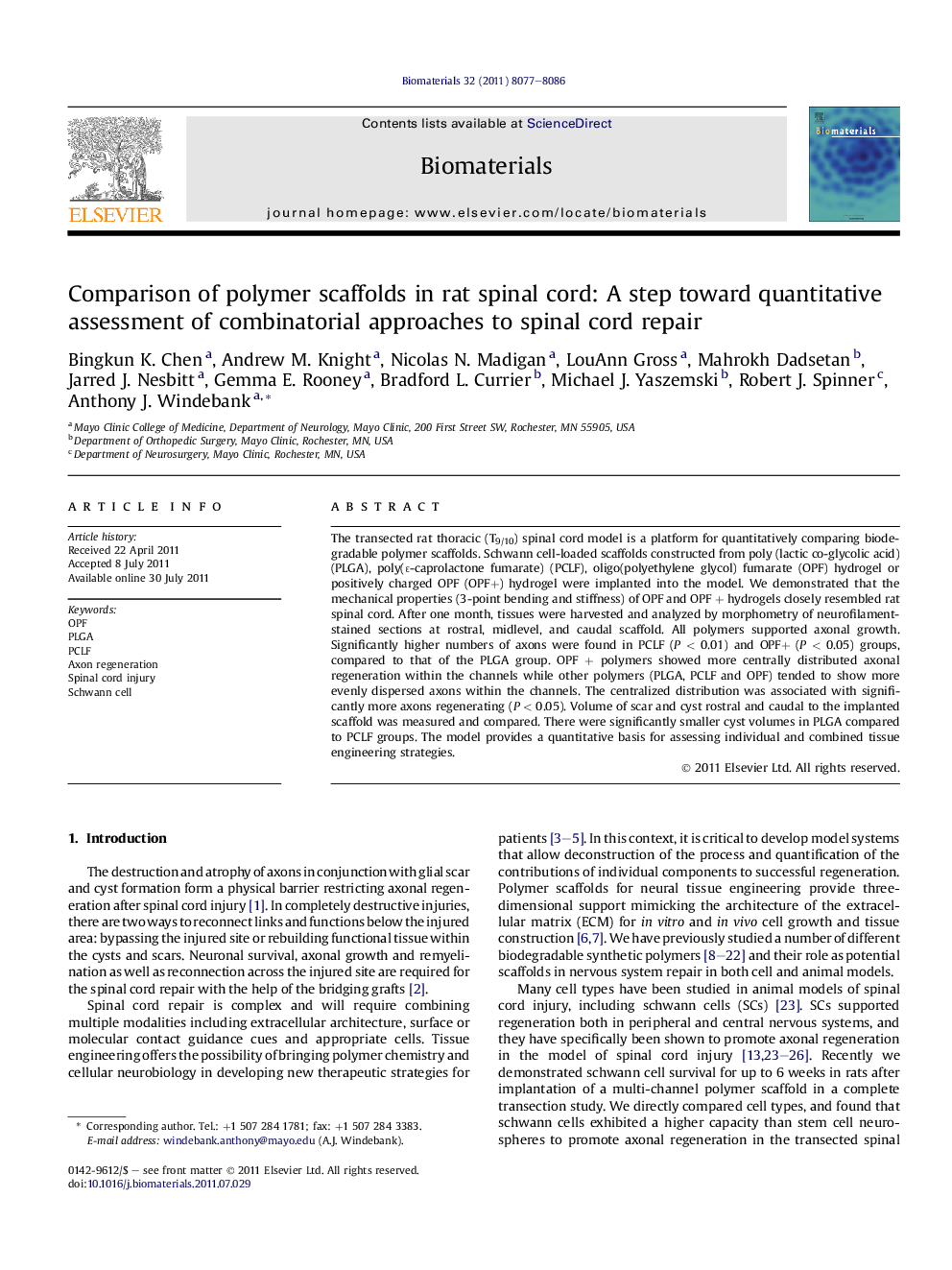| Article ID | Journal | Published Year | Pages | File Type |
|---|---|---|---|---|
| 7997 | Biomaterials | 2011 | 10 Pages |
The transected rat thoracic (T9/10) spinal cord model is a platform for quantitatively comparing biodegradable polymer scaffolds. Schwann cell-loaded scaffolds constructed from poly (lactic co-glycolic acid) (PLGA), poly(ɛ-caprolactone fumarate) (PCLF), oligo(polyethylene glycol) fumarate (OPF) hydrogel or positively charged OPF (OPF+) hydrogel were implanted into the model. We demonstrated that the mechanical properties (3-point bending and stiffness) of OPF and OPF + hydrogels closely resembled rat spinal cord. After one month, tissues were harvested and analyzed by morphometry of neurofilament-stained sections at rostral, midlevel, and caudal scaffold. All polymers supported axonal growth. Significantly higher numbers of axons were found in PCLF (P < 0.01) and OPF+ (P < 0.05) groups, compared to that of the PLGA group. OPF + polymers showed more centrally distributed axonal regeneration within the channels while other polymers (PLGA, PCLF and OPF) tended to show more evenly dispersed axons within the channels. The centralized distribution was associated with significantly more axons regenerating (P < 0.05). Volume of scar and cyst rostral and caudal to the implanted scaffold was measured and compared. There were significantly smaller cyst volumes in PLGA compared to PCLF groups. The model provides a quantitative basis for assessing individual and combined tissue engineering strategies.
